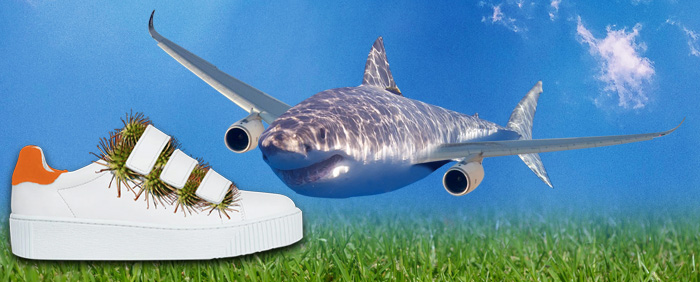Inspiration can come from anywhere. If you have a design problem to solve, it’s often worth investigating whether your problem, or something roughly analogous, has ever been solved by an animal, insect, plant or even a fungus, somewhere in the world.
The process of evolution by natural selection may have never invented the wheel or the micro-chip, but there is an untold number of elegant design solutions to be found in nature. Every organism that lives on the Earth today is descended from millions of generations of ancestors who found a way to survive and reproduce. Each generation provides the opportunity for exploring tiny changes to the design, and testing the results.
Mimicking shapes
One example that has found a place in all our lives is Velcro, the inspiration for which came from the hooks on burdock seeds. The seeds hook themselves to the fur of passing animals, and cling there while the animal walks around, then fall off at some later time, so it can grow far away from the parent plant. The application of the “sticky” hooks has nothing to do with keeping our children’s shoes fastened, but the solution works well for both problems.
The study of aerodynamics is so complex and mysterious that engineers often examine the shapes of birds, fish, insects, and airborne plant seeds to imitate their properties.
Mimicking behaviour
Even the most basic organisms have instinctive behaviour that helps them avoid danger or find nutrients, which can be based on surprisingly sophisticated algorithms. The species with the shortest lifetimes often have some of the most interesting adaptations, as they have had more opportunities to adapt. In a human lineage, it takes at least 20 years to run each little genetic experiment, but in that space of time an ant colony might have iterated through hundreds of generations, making incremental improvements each time. If you want to implement incremental innovations into your core business, then be more ant!
It’s also useful to observe simple organisms that don’t have a brain as such, but operate purely on instinct. Just like machines and computers, they have a relatively simple view of the world, and don’t “know” what they are doing, but specialise in a small number of behaviours. Analysing how slime mould finds its way through a maze to find food has helped computer scientists to write path-finding algorithms.
Manufacturing
One problem with biomimicry can be that the shapes and materials that grow naturally, can’t be mass-manufactured easily using injection moulding, extrusion, fastenings and adhesives. Thinking about the human body as an example, there are many interconnected systems of fluids, soft tissues, and hard bone and enamel. When a person’s heart valve fails, the mechanical replacement looks nothing like a natural heart valve. Even though we know exactly how a human heart valve works, it’s not feasible to recreate it using the solutions that evolved to fulfil that function because current manufacturing methods are still not up to the task.
How can you use biomimicry for your next design challenge?
You can’t just use a search engine to find biomimicry solutions for problems, you have to keep your eyes open and be prepared to think abstractly. With a clearly defined business brief or challenge, you can look for parallels within the natural world. Here at Ignite Exponential, we use biologists, marine biologists and geologists to brainstorm ideas to help clients with some design challenges.
Alternatively, if you don’t have any specific problems that you are trying to solve, you can dedicate yourself to studying the natural world and try to think of alternative applications for the natural adaptations. Take yourself out of the world of the familiar and investigate the organisms that you’ve never even heard of. You can try looking at the organisms that thrive in extreme environments, like in the desert, or in the depths of the ocean, to find out how they survive.
If you would like help with your design thinking and how to get inspiration from alternative sources and industries, then send us an email and we’d be happy to chat.

